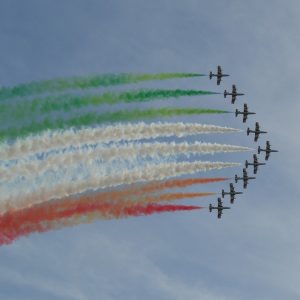Why is August 15th a holiday in Italy and what does it entail? ItalyNewsOnline takes a peek at the history of Ferragosto and how Italians celebrate the summer festival.
15th August is a Bank Holiday in Italy and signals the height of the summer holidays when many businesses are closed.
For Roman Catholics it is a time to celebrate the Assumption of the Virgin Mary into heaven. However, the origins of the festival date back further than Christianity – though not by much.
The festivals of Emperor Augustus
Ferragosto, the Italian name for the holiday, comes from the Latin Feriae Augusti (the festivals of the Emperor Augustus). Introduced in 18BC, it was an addition to earlier ancient Roman festivals which fell in the same month, such as the Vinalia rustica or the Consualia.
Emperor Augustus made the 1st of August a day of rest after weeks of hard work in the agricultural sector. It also became a custom for the workers to wish their employers “buon ferragosto” and receive a monetary bonus in return.
The Feriae Augusti linked the various August festivals to provide a longer period of rest, called Augustali.
In Roman times, the celebrations included horse races, and the Siena Palio dell’Assunta, which usually takes place on August 16th keeps these traditions alive.
The Church moves the dates
The Catholic Church moved the festivity to 15th August to incorporate the Assumption of Mary in the festivity. This was an attempt to move it from a political to religious festival.
Today, Italians celebrate both elements of the festive. It essentially marks the start of the summer holiday season for Italians. Many companies close for two weeks, allowing their staff a break.
Politics keeps its hand on the festival
During Mussolini’s fascist regime, he promoted trips away. In the second half of the 1920s, the regime organised hundreds of popular trips through the fascist leisure and recreational organisations of various corporations, and via the “People’s Trains of Ferragosto”.
The trains were available at discounted prices. The initiative gave the opportunity to the less well-off to visit Italian cities or seaside and mountain resorts. The offer was limited to 13-15th August with options of a One Day Trip or Three Day Trip.
Museums and cultural sites remain open
As a result of Mussolini’s propaganda move, many museums and cultural sites remain open. With the exception of the Vatican Museums, in Rome you can visit as the Colosseum, Pantheon or Galleria Borghese. Each city will have its major sites open to the public.
However, don’t be surprised to find many of the restaurants closed. It may seem strange to shut during what, outside Italy, is the height of the tourist season. However, this is a tradition rooted in the Italian way of life.
We recommend you join the Italians, make yourself a picnic and head to the hills or beaches, and have a ‘buon ferragosto’.





